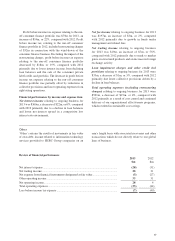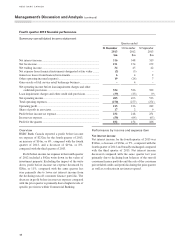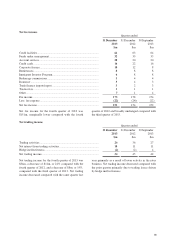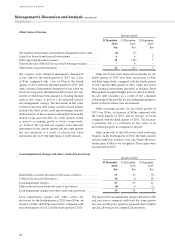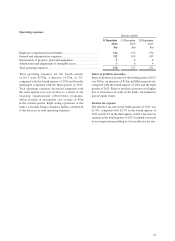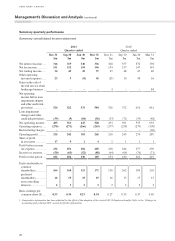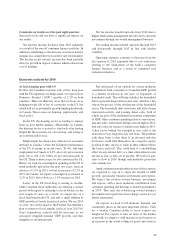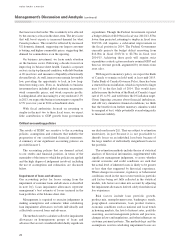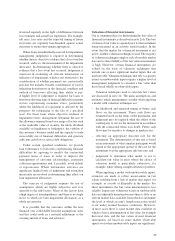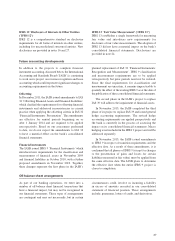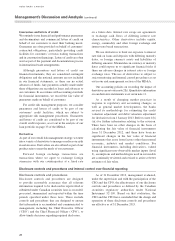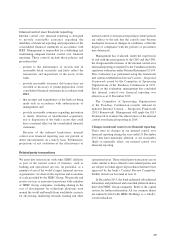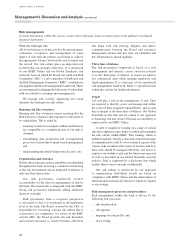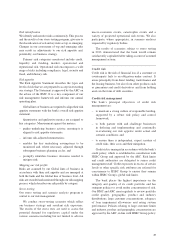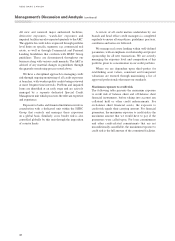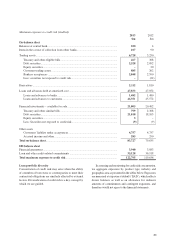HSBC 2013 Annual Report Download - page 29
Download and view the complete annual report
Please find page 29 of the 2013 HSBC annual report below. You can navigate through the pages in the report by either clicking on the pages listed below, or by using the keyword search tool below to find specific information within the annual report.
27
IFRS 12 ‘Disclosure of Interests in Other Entities
(‘IFRS 12’)
IFRS 12 is a comprehensive standard on disclosure
requirements for all forms of interests in other entities,
including for unconsolidated structured entities. New
disclosures are provided in notes 16 and 27.
IFRS 13 ‘Fair Value Measurement’ (‘IFRS 13’)
IFRS 13 establishes a single framework for measuring
fair value and introduces new requirements for
disclosure of fair value measurements. The adoption of
IFRS 13 did not have a material impact on the bank’s
consolidated financial statements. Disclosures are
provided in note 24.
Future accounting developments
In addition to the projects to complete financial
instrument accounting, discussed below, the International
Accounting and Standards Board (‘IASB’) is continuing
to work on its project on revenue recognition and lease
accounting which could represent significant changes to
accounting requirements in the future.
Offsetting
In December 2011, the IASB issued amendments to IAS
32 ‘Offsetting Financial Assets and Financial Liabilities’
which clarified the requirements for offsetting financial
instruments and addressed inconsistencies in current
practice when applying the offsetting criteria in IAS 32
‘Financial Instruments: Presentation’. The amendments
are effective for annual periods beginning on or
after 1 January 2014 and are required to be applied
retrospectively. Based on our assessment performed
to date, we do not expect the amendments to IAS 32
to have a material effect on the bank’s consolidated
financial statements.
Financial instruments
The IASB issued IFRS 9 ‘Financial Instruments’ which
introduced new requirements for the classification and
measurement of financial assets in November 2009
and financial liabilities in October 2010, with a further
proposed amendments in November 2012. Together,
these changes represent the first phase in the IASB’s
planned replacement of IAS 39 ‘Financial Instruments:
Recognition and Measurement’. IFRS 9 classification
and measurement requirements are to be applied
retrospectively but prior periods need not be restated.
Since the final requirements for classification and
measurement are uncertain, it remains impracticable to
quantify the effect of the existing IFRS 9 as at the date of
the publication of these consolidated financial statements.
The second phase in the IASB’s project to replace
IAS 39 will address the impairment of financial assets.
In November 2013, the IASB completed the third
phase of its project to replace IAS 39 and issued general
hedge accounting requirements. The revised hedge
accounting requirements are applied prospectively and
the bank is currently in the process of assessing the
impact on its consolidated financial statements. Macro
hedging is not included in the IFRS 9 project and will be
addressed separately.
In November 2013, the IASB issued amendments
to IFRS 9 in respect of transition requirements and the
effective date. As a result of these amendments, it is
confirmed that all phases of IFRS 9 (except for changes
to the presentation of gains and losses for certain
liabilities measured at fair value) must be applied from
the same effective date. The IASB plans to determine
the effective date when the entire IFRS 9 project is
closer to completion.
Off-balance sheet arrangements
As part of our banking operations, we enter into a
number of off-balance sheet financial transactions that
have a financial impact, but may not be recognized in
our financial statements. These types of arrangements
are contingent and may not necessarily, but in certain
circumstances could, involve us incurring a liability
in excess of amounts recorded in our consolidated
statement of financial position. These arrangements
include: guarantees, letters of credit, and derivatives.


